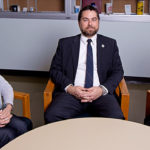To Improve the Economy, Close the Digital Divide
The “digital divide” is a term used to describe the gulf between those who have ready access to computers and the internet, and those who do not.


Considered an important issue beginning in the 1990s, the digital divide arguably impacts many fundamental aspects of life in a modern society, including economic equality, social mobility and economic growth.
In a global society an individual must be able to connect in order to function effectively in many occupations, acquire skills sets necessary for these occupations, access educational opportunities, access government services and in general broaden their knowledge of the world beyond their own door step.
The U.S. Census Bureau only recently started asking people about their ownership of computers in their home. Questions about the presence of computers, types of computers and Internet subscriptions were added to the 2013 and 2014 American Community Survey. The questions asked about ownership and use of all types of computers, including smart phones, and about various types of Internet access including dial up, DSL, cable modem and mobile broadband.
The one-year estimates produced in 2013 and 2014 contain significant margins of error for smaller geographies, but still reveal some interesting facts about the Pensacola area and the nation as a whole.
The first bit of news for Pensacola is good. The area has a higher level of both computer ownership and internet connectivity than does the nation as a whole. It may seem that household ownership levels should be higher, given how long personal computing has been in existence and with the rise of social media, but interestingly enough the ACS also reports 3 percent of Pensacola households do not even have a telephone.
Next, the data from the ACS on computing is also available for various demographic characteristics within the region. The data covers topics such as ownership by educational attainment and employment status. Data for the percentage of those who do not possess computers or internet connections by different characteristics is shown in the following tables.
It is this data that begins to reflect the differing levels of accessibility to home-based computing within Pensacola. The tables show that one in four households headed by someone with less than a high school education is without a computer as compared to one in 40 households headed by college educated individuals. Computers are present in over 14 of every 15 households headed by a white householder, while only 13 out of every 15 black households have a computer. Only slightly over half of households with incomes less than $20,000 per year have access to the internet.
In the United States, the digital divide was first looked at as a rural versus urban phenomenon.
As the use of computers grew, the focus was on the gap between those with access to high-speed connections and those without. Now, in looking at the initial data from the ACS, the divide may now be one based solely on household income level (which is a factor most often influenced by education, employment and, sadly enough, race or gender). There is some hope for improvements in this area as the federal Lifeline program, which has provided discounted telephone service since 1985, was recently revised to begin allowing for increased smart phone availability.
Because the margins of error are so high with one-year estimates, no firm conclusions can be drawn for Pensacola as yet. Better information will be available once the Census Bureau can produce five-year estimates based upon these questions. This and knowing the effect revised Lifeline service changes have on the data will help define the extent of the problem more accurately.
Phyllis K. Pooley serves as director of special projects with the UWF Office of Economic Development and Engagement in Pensacola.



